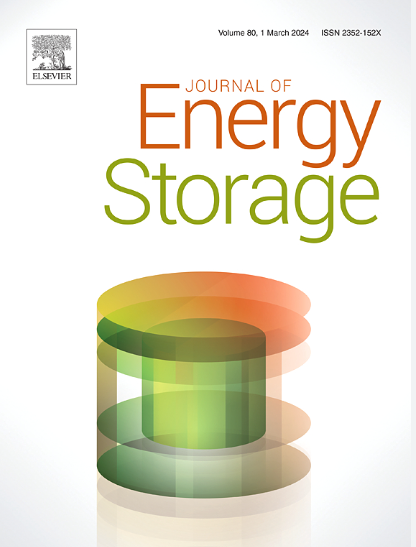带电力驱动系统余热回收功能的电动汽车集成热管理系统性能研究
IF 8.9
2区 工程技术
Q1 ENERGY & FUELS
引用次数: 0
摘要
在环境温度较低时,电池的放电效率较低,车厢的舒适性较差,因此必须对车厢和电池系统进行加热,以保证车厢的舒适性和电池的放电效率。本文针对纯电动汽车(EV)的热泵空调(HPAC)和电驱动系统(EDS)的余热回收(WHR)建立了一个集成热管理系统(TMS)模型,该模型包括电池 TMS、EDS TMS 和座舱 TMS。在该模型中,电池通过电机余热回收和减速器余热回收进行加热,而座舱则通过 HPAC 和电机余热回收进行加热,并在不同环境温度下制定了不同的加热策略。此外,为了快速提高电池和机舱的温度,还制定了电机闭锁和电机低效加热策略,以增加低温时从 EDS 回收到机舱和电池的废热(WH)。TMS的目的是在低温加热车厢和电池的前提下,降低电动汽车加热能耗(EC),增加电动汽车续航里程。结果表明,使用 EDS 的 HPAC 和 WHR 代替正温度系数(PTC)加热器加热电池和座舱后,在环境温度为 -20 °C、-10 °C、0 °C 和 5 °C 时,经过 6 个 NEDC 循环后,电池的充电状态(SOC)分别增加了 0.4 %、0.8 %、1.4 % 和 1.3 %。而在环境温度为-20 °C、-10 °C、0 °C和5 °C时,电动汽车的续航里程分别增加了31.622公里、30.513公里、17.494公里和19.352公里。本文章由计算机程序翻译,如有差异,请以英文原文为准。
Performance investigation of integrated thermal management system for electric vehicle with waste heat recovery of electric drive system
At low ambient temperatures, the battery discharge efficiency is low and the comfort of the cabin is poor, so it is inevitable to heat the cabin and the battery system to ensure the comfort of the cabin and the discharge efficiency of the battery. In this paper, an integrated thermal management system (TMS) model for pure electric vehicle (EV) with heat pump air conditioning (HPAC) and waste heat recovery (WHR) of electric drive system (EDS) is developed, and the model includes battery TMS, EDS TMS and cabin TMS. In the model, the battery is heated by motor WHR and reducer WHR, while the cabin is heated by HPAC and motor WHR, and different heating strategies are formulated at different ambient temperatures. In addition, in order to increase the temperature of the battery and the cabin rapidly, the motor blocking and motor inefficiency heating strategies are formulated to increase the waste heat (WH) recovered from the EDS to the cabin and the battery at low temperatures. The purpose of the TMS is to reduce the energy consumption (EC) of the EV for heating and increase the EV range under the premise of heating the cabin and battery at low temperatures. The results show that after using HPAC and WHR of the EDS instead of positive temperature coefficient (PTC) heater to heat the battery and the cabin, the battery state of charge (SOC) increased by 0.4 %, 0.8 %, 1.4 %, and 1.3 %, respectively, at ambient temperatures of −20 °C, −10 °C, 0 °C, and 5 °C after 6 NEDC cycles. And at ambient temperatures of −20 °C, −10 °C, 0 °C and 5 °C, the EV range increased by 31.622 km, 30.513 km, 17.494 km and 19.352 km, respectively.
求助全文
通过发布文献求助,成功后即可免费获取论文全文。
去求助
来源期刊

Journal of energy storage
Energy-Renewable Energy, Sustainability and the Environment
CiteScore
11.80
自引率
24.50%
发文量
2262
审稿时长
69 days
期刊介绍:
Journal of energy storage focusses on all aspects of energy storage, in particular systems integration, electric grid integration, modelling and analysis, novel energy storage technologies, sizing and management strategies, business models for operation of storage systems and energy storage developments worldwide.
 求助内容:
求助内容: 应助结果提醒方式:
应助结果提醒方式:


